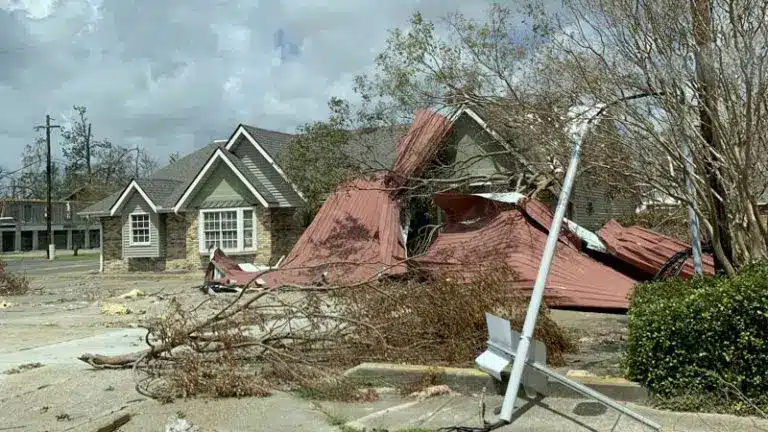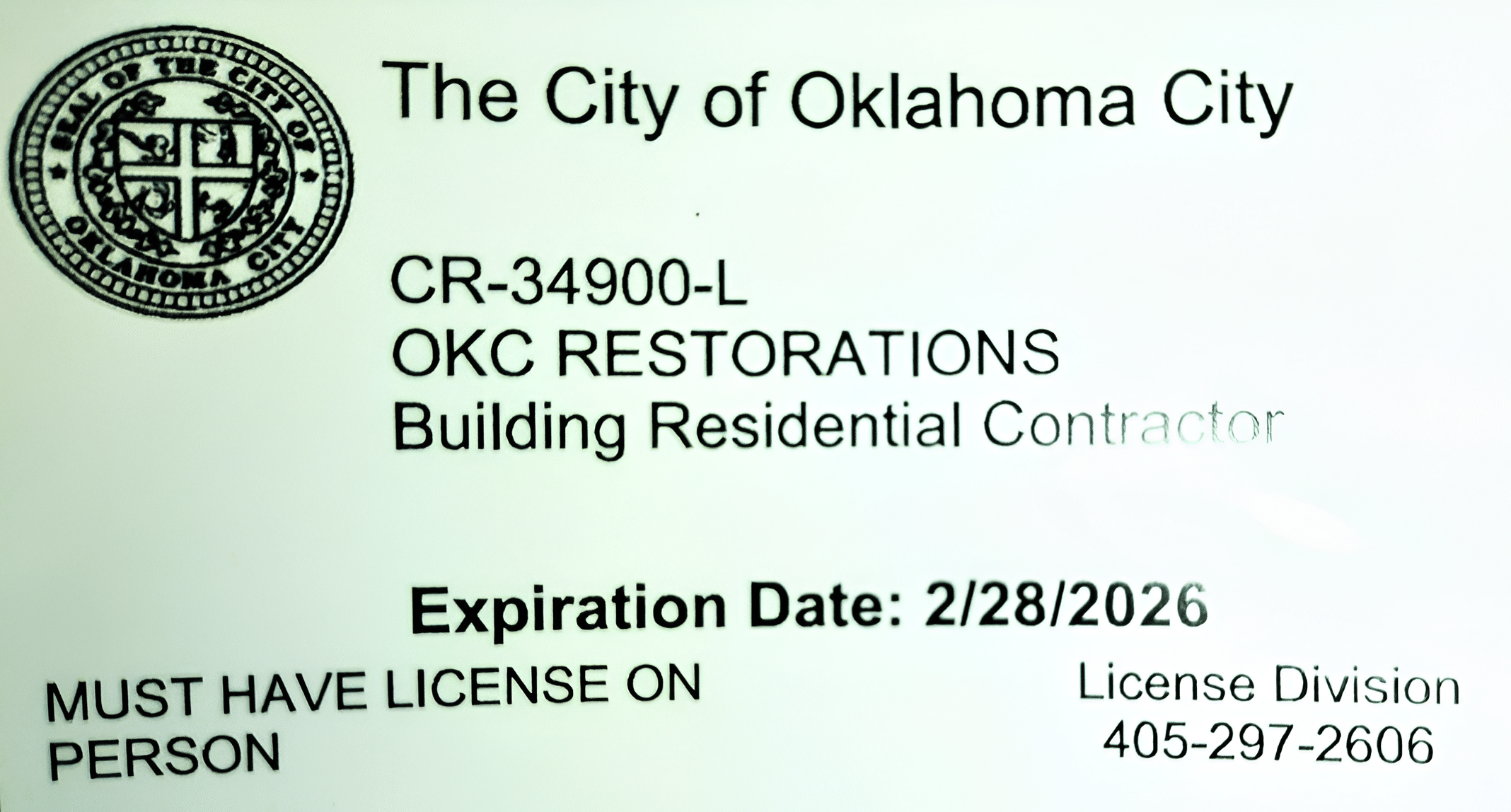
A storm can leave you feeling vulnerable and confused about how to begin cleanup. While the destruction can be massive to your roof, walls, personal belongings, and foundation, the right actions during the first few hours can protect both your family and property from additional risks.
Having a plan ready before a disaster makes handling the aftermath much easier and less stressful. In fact, there are seven critical steps that can help you recover faster and minimize the damage to your property.
Critical Steps to Take After Your House Is Damaged by a Storm
After a storm has passed, your first instinct might be to assess damage to your home immediately, but safety should come first. Here are the steps you should take after a storm has damaged your house:
1. Prioritize Safety
A storm’s aftermath can be as deadly as the storm itself, so you should be cautious while re-entering your home. Watch for potential hazards like broken power lines, unstable structures, and shattered glass before entering any area of your property. If you notice extensive roof damage or walls that don’t look stable, it’s better to stay somewhere else temporarily until the damage has been restored.
Additionally, pay attention to unusual smells that might signal gas leaks, and be careful around any standing water, especially near electrical systems. Inspect your house during daylight hours when there’s better visibility, and always have someone go with you in case you need help.
2. Document the Damage
Once it is safe to be in your home, make a complete record of all storm damage to use as evidence for your insurance claim. Make sure you take plenty of photos and videos of the damaged areas from multiple angles, both close-up details and wider shots.
Make a simple list of damaged items with the date you purchased them and their value. If you do have any photos of your home before the storm, have them ready for comparison to show what was damaged.
3. Notify Your Insurance Company
After a storm, it’s important to reach out to your insurance company as quickly as possible. After you reach out to your insurance company, your claim process will be activated, and you will receive compensation more quickly. Call your insurance company with your policy number ready and give them a basic overview of the damage you’ve found.
Then, ask about your deductible, coverage limits, and whether temporary housing will be covered if you can’t stay in your home. Before the insurance adjuster visits, mark areas of damage that might not be obvious to ensure they inspect your home thoroughly.
Keep track of who you speak with at the insurance company and write down the information they provide you with. This record can be very helpful if questions come up later in the claims process.
4. Protect Your Property from Additional Damage
Taking steps to protect your home after a storm prevents further damage and satisfies insurance requirements. You should cover broken windows, holes in the roof, and other openings with tarps or plywood to keep rain out and prevent more interior damage.
Move valuable items that weren’t damaged to dry, safe areas where they’ll stay protected until repairs are complete. Clear debris from downspouts and gutters so water flows away from the house instead of causing flooding around your property.
5. Begin the Cleanup Process
To clean up after storm damage, work systematically while keeping yourself safe from hazards. Start by gathering safety equipment: sturdy gloves, boots, safety glasses, and respirator masks to protect yourself from harmful debris. Sort the debris as you clean-put yard waste in one area, building materials in another, and hazardous items in a third spot-since different types of waste often have different disposal requirements.
Remove soaked materials that can’t be thoroughly dried within a day or two, especially items like wet carpet and drywall that quickly develop mold. Dry damp areas thoroughly using fans and dehumidifiers, checking hidden corners for moisture that will cause problems in the future.
It’s also important to check with your local waste management office about proper disposal methods for different types of storm debris.
6. Prevent Further Damage
Installing sturdy doors and windows can help a great deal in reducing damage from storms in the future. Take a close look at your garage door, which is likely to be one of the weakest points during high winds-consider adding bracing or replacing it with a wind-resistant one.
Around your yard, move or secure outdoor items like furniture, sheds, and even trash cans so they won’t become projectiles in high wind. Take care of trees on your property by planting them at a safe distance from your home and regularly pruning them, which reduces the likelihood of branches or entire trees falling onto your home during storms.
7. Seek Professional Help For Restoration
Having professional restoration services ensures that your house is properly restored, especially if you are dealing with water damage, which can lead to mold. Look for restoration companies with an IICRC certification and specific experience with storm damage, as they’ll have the right equipment and knowledge for your situation.
Before hiring anyone, get detailed estimates from several companies explaining what they’ll do, what materials they’ll use, how long it will take, and what guarantees or warranties they offer.
Consider finding your own restoration contractor rather than automatically using one recommended by your insurance company. This helps to make sure that their focus is on proper restoration techniques and not cost-cutting.
Why is Storm Damage Remediation Critical?
Responding immediately to storm damage prevents small problems from becoming complete disasters that threaten your entire home’s stability. Every hour that water sits in your damaged house affects building materials; drywall starts to warp within hours, and wood beams begin to rot within days. This rapid spread creates the right conditions for mold growth, which can develop within 24-48, releasing spores that cause severe respiratory problems and other critical issues.
Additionally, many insurance policies require you to take prompt action to prevent more damage to your property, making early action necessary for the claim to be granted. The sooner you make your living conditions safe again, the less emotional and financial stress your family will have to go through.
Get Professional Help From OKC Restorations
If a storm has damaged your property, OKC Restorations provides the professional restoration help that you need. Our team conducts thorough inspections addressing both visible damage and the hidden problems that often follow severe weather. If storm damage has led to water damage, fire risks, or foundation damage, we will restore your property quickly.
Contact OKC Restorations today for storm damage cleanup and restoration that follows building codes and IICRC guidelines. For a free inspection and more information, contact us today to get started.




